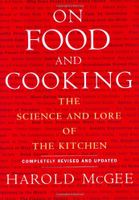Advertisement
Oat Processing
Appears in
By Harold McGee
Published 2004
Oats are generally used as whole grains, also called groats, because they’re much softer than wheat or corn and don’t break cleanly into endosperm, germ, and bran. The first stage in their processing is a low-temperature “roasting,” which gives the grain much of its characteristic flavor and inactivates the fat-splitting enzyme. (This step also denatures the storage proteins and makes them less soluble, giving the grain greater integrity during cooking.) The whole groats are then processed into various shapes, all of which have the same nutritional value. Steel-cut oats are simply whole groats cut into two to four pieces for faster cooking. Rolled oats are whole kernels that are steamed to make them soft and malleable, then pressed between rollers to make them thin and quick to reabsorb water during cooking or simple soaking (as for muesli). The thinner the oats are rolled, the faster they rehydrate: regular oats are about 0.8 mm thick, “quick-cooking” oats are around 0.4 mm, and “instant” even thinner.


